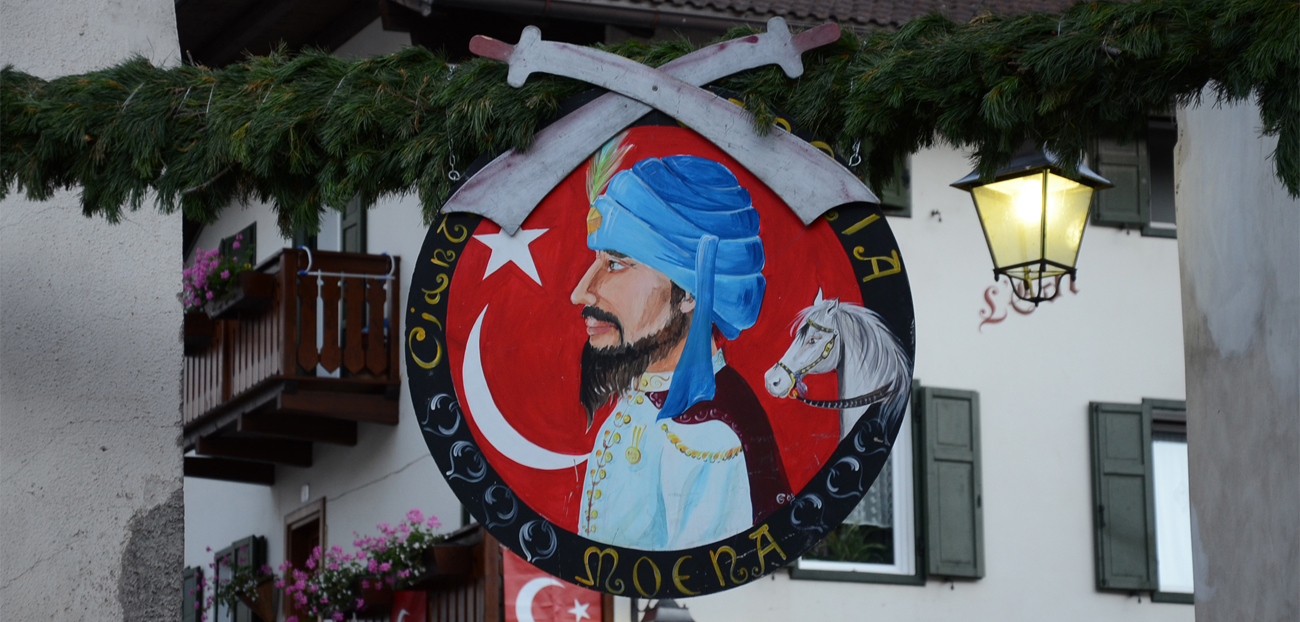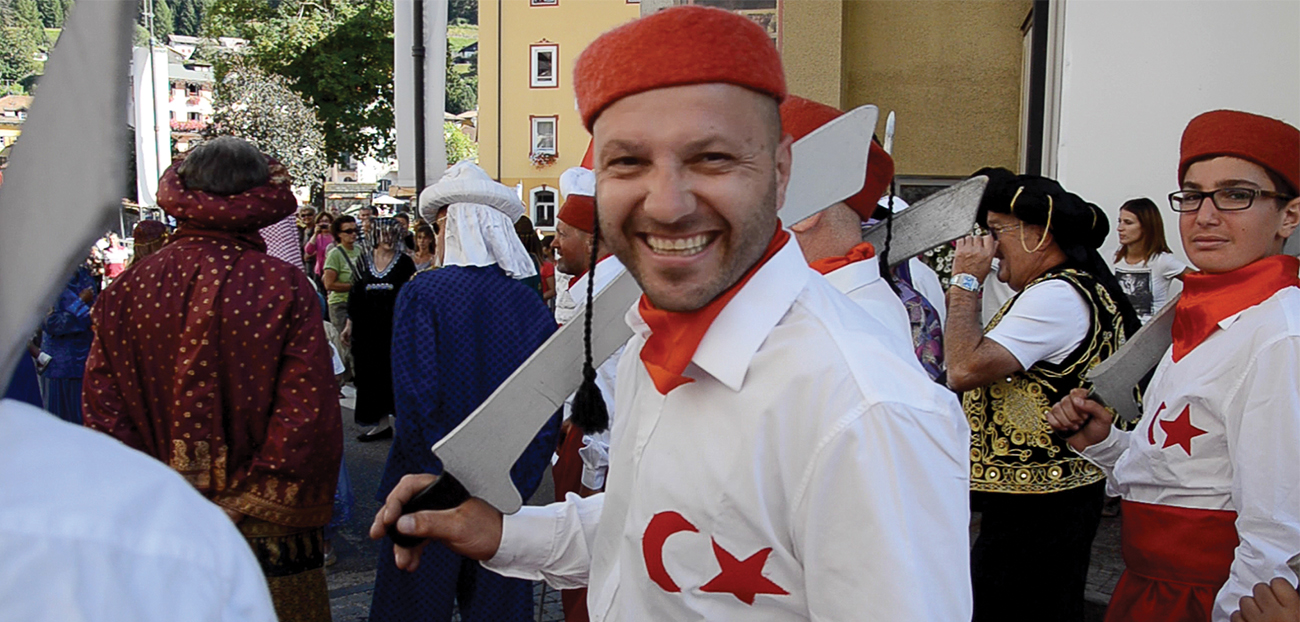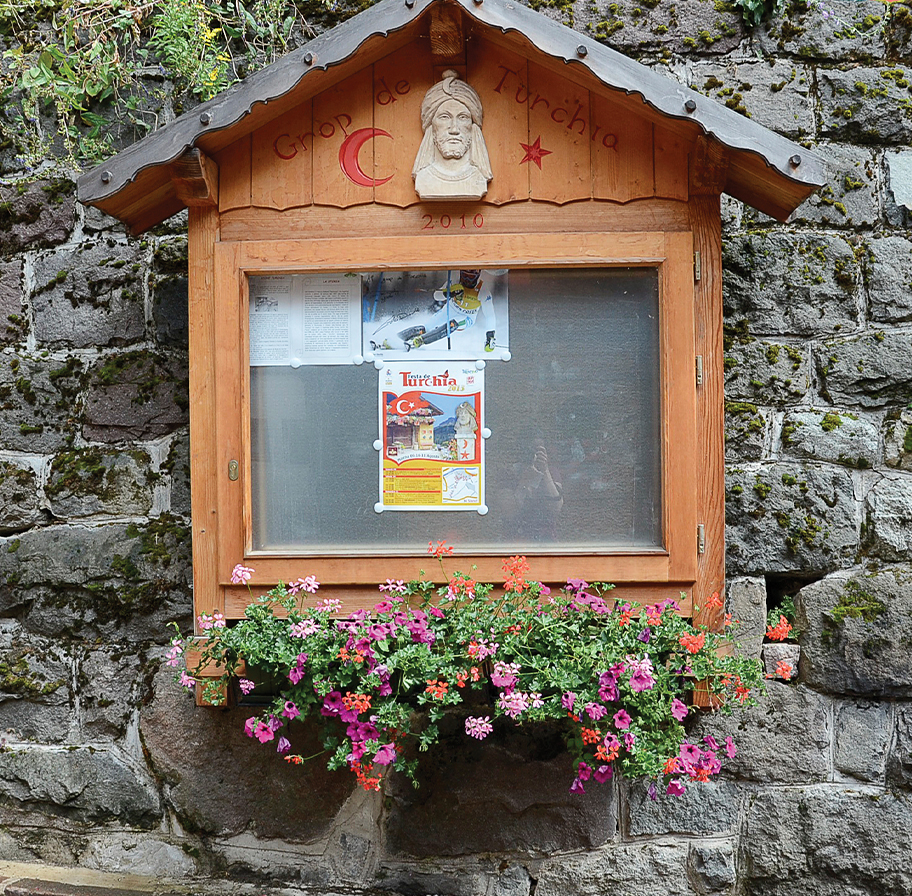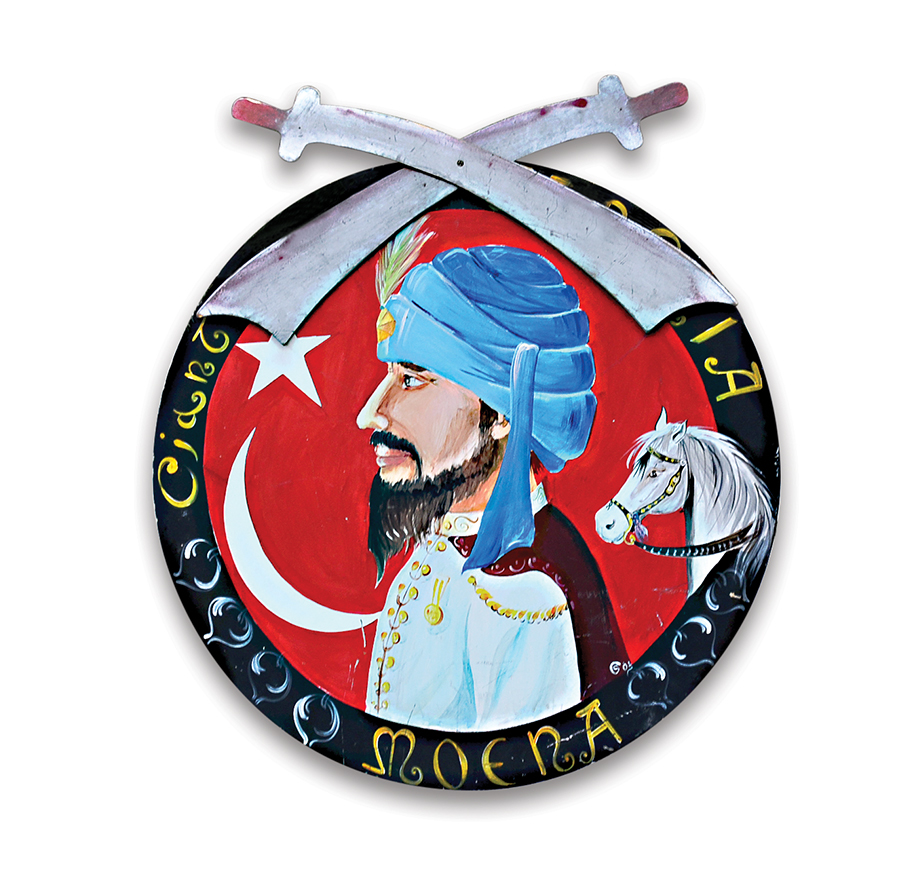
‘Rionede Turchia’
MOENA
Moena is a small spruce town within the borders of Italy and among the magnificent Dolomite mountains, which also attracts the attention of Turks. Among the Turks, this small town is known as the Turkish village and every year in August for three days the Turkish Festival is organized. During the festival, houses are decorated with Turkish flags and the story of how the Janissary soldiers came to Moena is told.
A Turkish neighborhood in Italy
Within the Italian borders and between the magnificent Dolomites mountains it exists a small Ladin village which also attract Turks, it’s called Moena
Among the Turks the small village is known as a Turkish village and once a year in August they celebrate the Festival of Turkey for three days. During the festival the exterior of the houses are decorated with Turkish flags. With this celebration they tell the story about the Janissary and how he arrived to Moena.

Here’s the interesting story of the Turkish neighborhood.
What I have explored in Moena is that, yes, it is a village and it has a town named Turkey. The people of Moena, are calling the Turkey neighborhood in the Ladin language: “Rione de Turchia”. Previously the neighborhood was once named “Ischiacia”. In year 1861 the people of Moena started to use the name “Turchia” which means Turkey.
There are many stories exist about why the name Turchia was given and from where it could resource? The most told story is related to a Janissary soldier who came to Moena.
In 1683 after the Ottoman army lost their second Battle of Vienna, soldiers were returning home, a Janissary -his name is unknown- while crossing the San Pellegrino Pass of Moena he felt exhausted and was found nearby a house. The villagers of Moena found and took care of him with water and food and restored his health back. The Janissary showed gratefulness towards the Moena folks and decided to live in the village. He settled nearby the Avisio river which is called later Turkish neighborhood and he has lived there for many years. According to the tale, the Janissary returned later back to his homeland to the Ottoman Empire.
Dr. Maria Piccolin is working at the public libarary of Moena and she’s explaining various hypothesis from where the toponym “Turchia” namely Turkey could resource from.


According to one of the stories;
The name ‘Torchia’ was used for the first time in 1800 by the Moena folks. The reason why they are calling Torchia is because the villagers were spinning linen and cotton yarn in the Turkish neighborhood. The english meaning of ‘Torchiò’ is to spin a yarn and it’s also the name of the spinning machinery. In Italian language “torcere” means to spin, or to twist.
The festival is held annually, by this occasion the Moena folks showcases how to spin a wool yarn and sells their typical handmade wool products.
Another story is told;
A narrative was told about a Franciscan monk who went for missionary reason to the Middle East. In the year of 1675 the Varesco family immigrated to Moena. In 1698 John Francis was born into the Varesco family. John Francis, became a Franciscan monk and was named “Father Accursio”. In the name of the church he was sent for missionary reasons to the Middle East and died later because of a plaque. He passed away in Egypt in year 1736. After his death he was recognized as Saint.
The Varesco family who lives in Moena were once holding a ancient paiting showing Father Accursio dressed in a typical Ottoman style, some people from Moena who saw this paiting sarcasticly nicknamed the family “la turca” namely “the Turks”. The painting belongs to the year 1788 and it was owned by the Varesco family.
Close to the property of the Varesco family in 1922 the “Fountain of the Turk” was built. This fountain can be found in the center of the Turkish neighborhood of Moena..
The usage of bride-price in Moena
Dr. Maria Piccolin adds an interesting detail: In different villages of Fassa Valley there is the tradititon to pay a bride price. In the Turkey quarter of Moena the pride price is paid “alla turca” namely in a turkish way during a ceremony with family and friends. The family who’s going to ask in name of his son the girl’s hand, puts inside the envelope money the so called pride price. The bride from the Turkey quarter who changes the quarter within Moena the bride price ceremony “bastià” is held. In this ceremony the bride who wants to marry the grom from another quarter outside of Turkey will need the permission from the Sultan to leave the quarter. The pride price is given to the Sultan in name of the Turkey quarter. In this ceremony the elder mens of the village becomes Sultans, women odalisque and younger mens wears Janissery costumes..
The Festival of Turkey from the 1950s till today
The Festival of Turkey seen today started actually in 1950 as a summer carnival and later changed to a three-days festival. On the opposite side of the Turkey quarter and across the Avisio river there is a square called “Piaz de Sotegrava” of which the story of the Janissery is told every year during a play. At the end of the play the Janissery is dressed up as a Sultan and right after the play a cortege walk is held. The Sultan arrives at the “Piaz de Turchia” and in a symbolic way the key of the Turkish quarter is handed over to him. The villagers of Moena who participates at the festival wears typical Janissary and Ottoman costumes, walks through the streets and holds turkish flags in their hands. During the festival you can see mens wearing fez hat and typical ottoman footwear carik, womens dress up in shalwar; it’s a kind of baggy trousers inspired by Ottoman clothing style.
In the last few years Turkish people shows interest to Moena and its Festival of Turkey which is organized annualy and, also the Turkish and Italian press pays a lot of attention to it. The people of Moena tries to keep their own traditions alive by adding value and interest. Various stories are told about the name “Turchia” from where it could derive from and the final source is still not clear yet. The people of the Turkey quarter of Moena are very proud to call themselfs “Turks”, in such a manner as; when a Moenesi marries a person from the Turkey quarter of Moena they will say: “I’m married with a Turk”.
Since the first time I arrived to Moena, my thoughts about the people of Moena was quite postive, they are very warm hearted, cheerful, friendly and helpful, that’s the way how I’ve got to know them. In Moena I’ve expirienced a good portion of humanity, unfortunately, nowadays in larger cities these kind of nice gestures are seen less. If you plan a visit to Italy you definitely shouldn’t miss to visit Moena.
About Moena
Located within the borders of Italy and the Trentino region. Moena is a small mountain village. The population is about 2.723 and it’s 1184 meters above sea level. Moena takes part of the Fassa Valley and it is called “Fata delle Dolomiti” meaning “The fairy of the Dolomites”. This name was honored because Moena is surrounded by gigantic and magnificent mountains, the greenery, wooden houses, and also because of its charming landscape. In 2009 the Dolomites mountains were declared a UNESCO World Heritage Site.
Moena is one of the five Ladin villages in Fassa Valley, they belong to the ethnic group of Raeti and are of Etruscan origin. In year 15 BC the Roman Empire conquest the Fassa Valley region, as a result, two populations fused with each other; the Raeti and the Romans. The language changed from Rhaetian to Rhaetian “vulgar” Latin of which today it’s known as the Ladin language. The Ladin language is different from the Italian language. The Ladin people speaks with each other only in Ladin language and besides that they speak also the Italian language like their native tongue. 78,8% of Moena recognizes the Ladin language as their native tongue and the rest of 22,3% are native speakers of the Italian language. Ladins have their own flag, which is made of 3 colors: green represents the nature, white represents snow on the dolomites mountains and the blue represents the sky. Up until this day, the Ladin people still continue to protect their culture, language and their cuisine with great care.
Due to their hard to reach location, the people of Moena kept their traditions the way it has been for years and protected itself from the outside world. You can experience this authentic culture when you visit Moena.
Engin Tufan Sevimli
Editor




Say hello to us